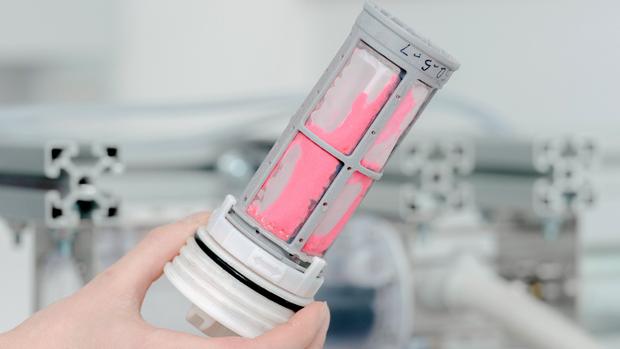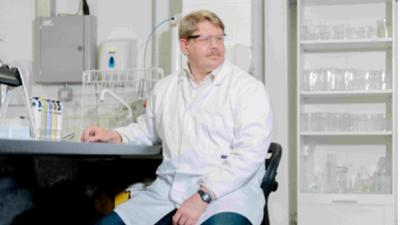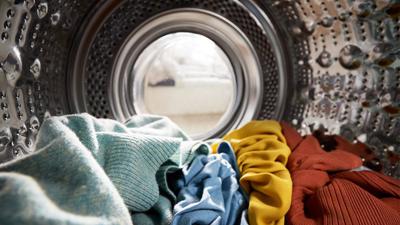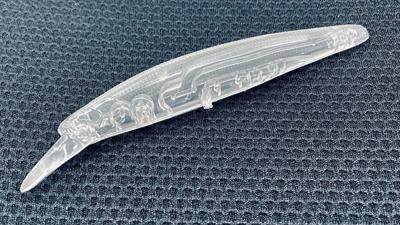EU

(Source: Xeros Technology)
A whitepaper has been delivered to Members of the European Commission ahead of the EU’s Initiative to tackle microplastics unintentionally released into the environment, due to be published on 17 May 2023. The whitepaper, authored by a group of NGO’s, scientists, and solution providers, calls on the EU to mandate for filters in washing machines as the only effective near-term solution.
Sustainability has become a key theme for the European Union (EU) and an important driver for policy development. In March 2022, the European Commission released its EU strategy for sustainable and circular textiles [1] within the Circular Economy Action Plan. The strategy aims to establish a framework to boost the competitiveness, sustainability, and resilience of the EU textile sector. This includes an initiative to tackle microplastics unintentionally released into the environment, with the aim of reducing environmental pollution and human health impacts while encouraging innovation.
On May 17, 2023, the European Commission is expected to publish its initiative on tackling microplastic pollution. This whitepaper urges the Commission to follow the lead France has already taken to mandate for washing machine filtration, alongside a wider call for systemic change in the textile industry.
The whitepaper is authored by A Plastic Planet, Matter, PlanetCare, Xeros Technology and 5 Gyres Institute.
On May 17, 2023, the European Commission is expected to publish its initiative on tackling microplastic pollution. This whitepaper urges the Commission to follow the lead France has already taken to mandate for washing machine filtration, alongside a wider call for systemic change in the textile industry.
The whitepaper is authored by A Plastic Planet, Matter, PlanetCare, Xeros Technology and 5 Gyres Institute.
Microplastics and textiles
Microfibers (fibers less than 5 mm) from synthetic textiles are contributing to the global plastic crisis. Every year more than half a million tons of microfibers are released into the world's oceans simply from washing our clothes [2]. Synthetic textiles are now thought to be the most prevalent source of microplastics found in waterways and soil [3].
Microplastics are a pervasive environmental problem; they have infiltrated the most pristine locations on Earth, from Antarctic Sea ice to the guts of marine animals inhabiting the deepest ocean trenches [4]. They have been found in drinking water [5] and food systems [6]. Microplastics are pervasive in the environment, but also in the human body. They have been found in stool [7], blood [8], lung tissue [9-11], breast milk [12], and the placenta [13].
Microfibers are released during textile manufacturing, everyday consumer activities (washing, drying, wearing) and the disposal of clothes. Studies show that most textile-based primary microplastics are released in the consumer use and laundry phases [14, 15]. Research shows that some garments can shed hundreds of thousands to millions of microfibers in a single laundry load [16].
Synthetic textiles are now thought to be the most prevalent source of microplastics found in waterways and soil [17]. Based on current trends the amount of synthetic microfibers entering the ocean between 2015-2025 could accumulate to an excess of 22 million tons [18].
Solutions to microplastics from textiles
A variety of solutions are needed to reduce the release of microfibers in the environment:
• Reducing the production and use of synthetic textiles should be a critical focus of any policy and regulatory action when looking at the fashion industry's impact on microplastic pollution.
• Upstream, one of the most effective remedies is textile redesign. However, improving material design and manufacturing processes is still only in its initial phase and therefore cannot be considered a near-term solution to tackling the microplastic problem. Furthermore, the majority of existing clothes do not have these design features and will therefore continue to shed large amounts of microfibers. This solution requires a major mindset shift towards a more circular way to make and buy our clothes.
• Wastewater treatment has potential to be an effective long-term solution for reducing microplastics but currently it is not fit for purpose. The majority of microplastics captured in wastewater treatment end up as sewage sludge, which is commonly used as organic fertilizer in the USA and Europe.
By contrast with longer-term production and disposal changes, microfiber capture solutions are effective and commercially available now. Filtration is therefore the best applicable, near-term solution to deal with this ever-growing problem.
Call to action
The whitepaper states that by mandating washing machine filters, the European Commission could significantly reduce the release of microplastics into the environment and therefore deliver on the EU’s strategy for sustainable and circular textiles within the Circular Economy Action Plan.
It highlights 2 critical and interlinked considerations for legislation that mandates washing machine filters:
1. Timeliness: Legislation to mandate washing machine filters must be brought into effect as soon as possible in order to have the biggest and most immediate impact on microplastic pollution.
2. Standards: The legislation must require a capture rate of at least 90% of microplastics for every wash cycle in order to have impact.
The conversations taking place around the UN Plastic Treaty in Paris/France in May 2023 show that critical steps are already being taken to introduce binding global measures to tackle the environmental and health risks posed by microplastic and microfiber pollution by 2024.
France has set the benchmark as the first country in the world to take legislative steps in the fight against plastic microfiber pollution, with mandatory microfiber filters on washing machines to be introduced from 2025 [19].
A microfiber filtration bill has also been introduced in California/USA mandating all new washing machines sold in the state to contain a microfiber filtration system with a mesh size of not greater than 100 µm. If passed, the bill would come into action on the January 1, 2029 and would position California behind France as the second region to introduce legal measures against microfiber pollution [20]. The bill passed the first committee hearing in March 2023.
It is estimated in the EU alone, 35 tons of textile microfibers are released into the environment every day [21]. If the Commission were to support these mandates it would have substantive impact in reducing microfiber pollution at scale.
References
[1] European Commission. EU strategy for sustainable and circular textiles (2022)
[2] Boucher, J.; Friot, D.: International Union for Conservation of Nature. Primary microplastics in the oceans: a global evaluation of sources (2017).
[3] Weis, J. & De Falco, F. Microfibers: Environmental Problems and Textile Solutions, Microplastics (2022).
[4] Jamieson, A.J. et al.: Microplastics and synthetic particles ingested by deep-sea amphipods in six of the deepest marine ecosystems on Earth. Royal Society Open Science 6, 2 (2019).
[5] Koelmans, A. et al.: Microplastics in freshwaters and drinking water: Critical review and assessment of data quality, Water Research 155, 410-422. (2019)
[6] Ferrante, M. et al.: Micro- and nano-plastics in edible fruit and vegetables. The first diet risks assessment for the general population, Environmental Research, 187, 109677 (2020)
[7] Schwab, P.: Assessment of microplastic concentrations in human stool (2018)
[8] Leslie, H. et al.: Discovery and quantification of plastic particle pollution in human blood, Environment International, 163, 107199 (2022)
[9] Chen, Q. et al.: An emerging role of microplastics in the etiology of lung ground glass nodules, Environ Sci Eur 34, 25 (2022)
[10] Jenner, L. C. et al.: Detection of microplastics in human lung tissue using μFTIR spectroscopy, Science of The Total Environment 831, 154907 (2022)
[11] Pauly, L. et al.: Inhaled Cellulosic and Plastic Fibers Found in Human Lung Tissue, Cancer Epidemiology 7 (1998)
[12] Ocean Wise: Smart Wash cycle design can reduce microfiber shedding
[13] Ragusa, A. et al.: Plasticenta: First evidence of microplastics in human placenta, Environment International 146, 106274 (2021)
[14] De Falco, F. et al. Evaluation of microplastic release caused by textile washing processes of synthetic fabrics, Environmental Pollution, 236 (2018)
[15] Galvão, A. et al. Microplastics in wastewater: microfiber emissions from common household laundry, Environmental Science and Pollution Research, 27 (2020)
[16] Carney Almroth, B.M. et al.: Quantifying shedding of synthetic fibers from textiles; a source of microplastics released into the environment, Environ Sci Pollut Res 25, 1191–1199 (2018)
[17] Weis, J.; De Falco, F.: Microfibers: Environmental Problems and Textile Solutions, Microplastics (2022)
[18] Ellen MacArthur Foundation: A new textiles economy: redesigning fashion’s future (2017)
[19] European parliament. Plastic microfibre filters for new washing machines by 2025. (2020).
[20] California Assembly Bill, AB 1628.
[21] Eunomia and ICF, 2018 https://www.eea.europa.eu/publications/microplastics-from-textiles-towards-a



